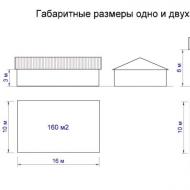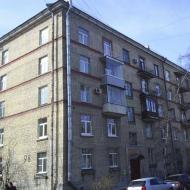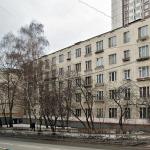
Accounting payback of the draft formula. Playback period of the project: a new approach to the calculation
The main purpose of investing is to obtain benefits from invested funds. Before getting profit from the project, you need to return the invested funds. The time for their return is called the payback period of the project.
Investment activity is quite complicated. Before investing in a specific project, it is necessary to carefully examine all sorts of risks.
To do this, use certain calculations that help capital owners make right choice. There are many indicators, their importance for each investor can be absolutely opposite. But there are several, which, in any case, are evaluated before investigating funds into a specific project.
One of them is a payback period. Using the calculation of this indicator, the investor estimates the period that invested resources is observed. After that, he will start receiving net profit.
There are many factors on the payback ratio, some of them are impossible. They neglect or take for a constant value. But, nevertheless, when comparing multiple projects with the same yield, preference will be given to the payback period of which less.
The reason is simple - the longer time passes before going to the payback point, the higher the risks, and more likely the occurrence of unforeseen circumstances.
It can be:
- inflation growth;
- appreciation of credit resources;
- changes in currency exchange rate;
- political situation in the country.
Such processes may entail an increase in payback period, reducing returns, and even the likelihood of a loss. Therefore, each investor seeks to return the money in the shortest possible time.
In countries with a stable and developed economy, investors can invest in long-term projects. In other cases, preference gives short-term investments with a period of one to three years.
How to calculate the indicator
Investing implies a refusal of instant earnings for the sake of profit in the future. The correct calculation of the payback period of the investment project gives the answer to the question: what time period the investor will expect the return of investments and whether they are appropriate.
How is the return on the investment project calculated?
There are quite a lot of methods. Some of them are simple, tested by time, others are complex, innovative. The choice depends on the owner of the capital.
The standard method for calculating the payback of investment is simple - it represents the ratio of the amount of investment invested in the project, to a clear annual profit. The result is a digit that shows the number of years (months) required for payback.
ATTENTION: Such a formula does not take into account many factors and works only under the condition if the funds are invested completely at one time period, and profit will be the same every year.
An example of calculating the payback period of the investment project
Suppose an investor is going to invest in commercial real estate (see), which plans to rent as a studio for a photo. The cost of the transaction amounted to 180,000 euros. He expects to receive a fee for renting rooms in the amount of 1000 euros per month.
The calculation of the payback period of investments in this case will look like this:
- 1000 * 12 \u003d 12000 euros (rental income per year);
- 180 000/12000 \u003d 15 years (payback period).
Thus, invested in the purchase of real estate 180,000 euros, an investor will return to the funds in 15 years and starts to get a net profit. However, this calculation of the payback of the investment project is conditional and does not take into account the likelihood of the loss of the tenant and the time spent on the search for a new one.
In addition, it does not take into account the possible dynamics of the price of the market - the average rental price of premises may change in one direction or another. Also probably the emergence of unforeseen expenses, such as repairing the premises, taxes, and so on.
At the same time, the formula for calculating the payback period of investment gives an investor's appearance on the attractiveness of the project. Knowing the time-readability time, it can make a decision based on certain data. Even if you take into account the circumstances that do not take into account the calculation instruction, the picture for the investor will still be extremely clear.
Calculation based on the discounting coefficient
When investing, it is often taken into account such an important indicator as a change in the cost of funds. In this case, the payback period is calculated, which is a period of returning investment, taking into account changes in the cost of funds. A special discounting coefficient is introduced into account.
![]()
Here:
- n - the number of periods;
- CFT - inflow of funds for the period T;
- r is the discount rate;
- IO - the size of the initial investments in the zero period.
The video in this article will help you.
They are characterized by instability, which becomes the cause of inflation jumps and reducing the cost of funds. Long-term investments In such cases, they require serious analysis, since the purchasing power of money can change significantly, moreover, in a smaller side. This can lead to a decrease in the real profitability of the project.
Activities of any investor are associated with risks. To reduce them, use various indicators that demonstrate the feasibility of investing. Payback period is one of the most important.
Training in the calculation of this indicator is very important, since with its help the investor estimates the period of time through which it will start receiving real profit. There are formulas for calculating the deadline for returning invested funds, but they are not always accurate.
Many factors do not take into account and give a fairly conditional result. However, even such a calculation of the payback of investment is the base from which an investor may be repelled when comparing several projects or decisions on the possibility of investing funds.
Consider such investment indicator As a period of payback of investments, its modifications, examples and formulas for calculation.
Payback period of investments (englishPppayBackperiod.) - This is the minimum period of the return time invested in the investment project, business or any other investment. Payback period is the key indicator of the assessment investment attractiveness Business plan, project and any other investment object. Consider various payback periods used in practice:
This indicator allows you to compare various projects among themselves to the degree of their effective return efficiency.
# 1 Payback period of investments (PP). Formula
Ic ( Invest. Capital.
CF I ( Cash Flow.
For calculation cash flow It is necessary to take advantage of the following formulas:
![]()
BUT ( A.mORTIZATION.) - depreciation, type of cash flow, which is not cost;
NP ( Net. Profit.) - Net profit of the investment project.
 |
★ (Calculation of Sharpe Coefficients, Sortino, Trainer, Kalmar, Modillias Beta, VAR) + rate forecasting |
DIRECTION OF PREPARATION OF INVESTMENTS (PP). Example calculation in Excel
Calculate the return on investment in the project using the Excel program. To do this, it is necessary to determine the initial costs that in our example amounted to 100,000 rubles, then it is necessary to predict future cash receipts (CF) and determine from what period the amount of cash flow will exceed the initial investment costs. The figure below shows the calculation of the payback period of the project. The formula for calculating the cash flow by a growing result is as follows:
Cash flow by a growing outcome (CF) \u003d C6 + D5

Example of calculating the payback period of investments in Excel
In the fifth month cash receipts The initial cost will pay off, so the payback period will be 5 months.
The main disadvantages of using this indicator in the assessment of investments are:
- The lack of discounting cash flow projects.
- Cash receipts outside payback period are not considered.
# 2 Discounted payback period of investment (DPP). Formula of calculation
Discounted payback period (englishDPP,Discounted.PayBackPeriod.) - Refund period money Taking into account the time value of money (discount rates). The main difference from the simple payback period is discounting cash flows and bringing future cash receipts to the current time.

DPP ( Discounted. PayBack Period.) - a discounted payback period of investments;
Ic ( Invest. Capital.) - initial investment costs in the project;
CF ( CashFlow.) - cash flow created by the investment;
r is the discount rate;
n - project implementation period.
Calculation of the discounted payback period of investments in Excel
Consider an example of the assessment discounted period Payback of investments for a business plan. The initial investments amounted to 100,000 rubles, the cash flow changed monthly and reflected in the column "C". The discount rate was taken equal to 10%. To calculate the discounted cash flow, we use the following formula:
Discounted cash flow \u003d C7 / (1 + $ C $ 3) ^ A7
Cash receipts with a growing outcome \u003d E7 + D8

Example of calculating the discounted payback period of investments in Excel
The project will pay off for 5 months, in which cash receipts will amount to 100860 rubles.
Master class: "How to calculate payback period for a business plan: instruction"
# 3 payback period of investments with the liquidation value
Payback period, taking into account the liquidation value (englishBail-Out.PayBackPeriod.) - is a period of return of funds, taking into account the residual value of the assets created in the investment project. When carrying out an investment project, assets can be created that can be sold (liquidated) as a result of this period of payback period of the project is significantly reduced.

Where:
Ic ( Invest. Capital.) - initial investment costs in the project;
RV ( Residual Value) - the liquidation value of the project assets;
CF I ( Cash Flow.) - cash flow from the project in i-th period time that is the amount of net profit and depreciation.
The liquidation cost can, how to increase as a result of the creation of new assets, and decrease due to wear.
Calculation of the payback period of investments, taking into account the liquidation value in Excel
Figure below shows the calculation of the recoupment period of the project, taking into account the liquidation value. The formula in Excel is quite simple and has the form:
Cash receipts with liquidation cost \u003d C6 + E5 + D6

An example of an estimate of payback period, taking into account the liquidation value in Excel
As a result, the payback period, taking into account the liquidation cost, will be ~ 4 years. This method Estimates are appropriate to apply with the high liquidity of the assets being created. As you can see, in this embodiment of the payback period, the discount rate can also be used.
Summary
Payback period is the most important indicator investment analysis Projects and business. It allows you to determine the feasibility of investment in a particular project. The use of discounting cash flows and the liquidation cost of assets allows the investor to more accurately assess the period of return of capital. In addition to this coefficient, it is necessary to analyze through other performance indicators: a net present value (NPV), the internal rate of profitability (IRR) of the profitability index (PI). In addition to the point assessment, the dynamics of cash flows and their uniformity are needed.
Planning and starting your own business, the most important thing is to correctly calculate its profitability so that the money into it is not burned. The development of our own business is influenced by many factors and parameters that need to be taken into account so that the business is not unprofitable and fail. One of important indicators There is a payback of business, its profitability, that is, the term for which invested money will pay off and bring profit. The smaller the payback period, the higher the profitability of the business and the enterprise.
One of the main problems of novice businessmen is the issue of payback to the new project. This is one of the main criteria when making a positive decision on creating a business to know how long the profit from doing business will only be a refund of investments.
Here, two indicators are important - this is absolute and relative. The absolute is there is a result that was received from investment and is measured by an increase in profit.
One way to calculate payback period is not discounted calculation method.
 Let's look at the example to make it easier to understand the essence of the method. For example, for the production of some product you buy equipment on total 100,000 rubles. To do this, you must calculate the cost of the manufactured goods, it includes the cost of raw materials, production costs, depreciation of equipment. Take that the cost of the unit of goods will be equal to 100 rubles, and that it is manufactured in one hour. So, 8 products will be manufactured for shifts. Based on this, it can be calculated for what period of time it will be possible to return the funds that were invested in production. Payback scrapbook formula: payback period \u003d cost of production equipment / cost of goods in one month \u003d 100000/800 * 25 \u003d 5 months.
Let's look at the example to make it easier to understand the essence of the method. For example, for the production of some product you buy equipment on total 100,000 rubles. To do this, you must calculate the cost of the manufactured goods, it includes the cost of raw materials, production costs, depreciation of equipment. Take that the cost of the unit of goods will be equal to 100 rubles, and that it is manufactured in one hour. So, 8 products will be manufactured for shifts. Based on this, it can be calculated for what period of time it will be possible to return the funds that were invested in production. Payback scrapbook formula: payback period \u003d cost of production equipment / cost of goods in one month \u003d 100000/800 * 25 \u003d 5 months.
But this is a very simple calculation, it is visible here on what principle and order needs to be calculated.
For a difficult and serious project, it is necessary to take into account all expenses incurred in the production and sale of goods, the risks that, ultimately, all together and affects the payback of the cash spent.
 For a person who wants to start his business, you need to correctly calculate the payback of the project and its profitability. This can be done independently, and contacting the financial specialist.
For a person who wants to start his business, you need to correctly calculate the payback of the project and its profitability. This can be done independently, and contacting the financial specialist.
We need to take into account market factors, what demand for the goods, at what stage there may be delays in the implementation or production of goods. Information is now a lot, and in books and various sites.
Payback of rental business
 Rental business is one of the easiest and most reliable investment options.
Rental business is one of the easiest and most reliable investment options.
It is also important that there is no constant presence and the involvement of the owner in the process itself. If the room and tenant are chosen correctly, then the surrender can be submitted to a permanent and stable income. At the same time, such activities can be combined with another business.
At first glance, the estimate of profitability and payback to the rental business should not be difficult, you need to compare income from the rental and cost to get the payback period, the main rate of rental business.
 Standard payback period commercial real estate It is 9-10 years. The payback period of 7-8 years for commercial real estate with a tenant is already quite difficult to find.
Standard payback period commercial real estate It is 9-10 years. The payback period of 7-8 years for commercial real estate with a tenant is already quite difficult to find.
At the same time, sellers, buyers and appraisers can calculate the payback period in different ways. Here the difference will be the indicator to be considered income when calculating payback.
The seller, as a rule, takes the amount of rental payments for the year and divides the sale price for this amount. If the room is sold with an area of \u200b\u200b220 square meters, which gives up for 1000 rubles per square meter per month for 22 million rubles, the calculation will be as follows. Per month income is 200 thousand rubles, and a year 2 million 400 thousand rubles, then the payback will be obtained 20 million / 2.4 million, 3 years. And when selling such real estate, this time will be specified.
It also happens that a long-term lease agreement has been concluded with a tenant, and 7.5% indexing occurs every year. In this case, for each year the rental amount is considered, given the indexation, everything is summed up. That is, here the payback period will be less.
Calculation of buyers
Buyers are suitable for calculation a little differently, the emphasis is placed on the income in cash, so to speak net income, minus all costs.
 Costs include tax 6% of income, protection costs, cleaning, rent or pay for some utilities. The greater the larger object, the more expenses with him fall on the owner.
Costs include tax 6% of income, protection costs, cleaning, rent or pay for some utilities. The greater the larger object, the more expenses with him fall on the owner.
With a room with an area of \u200b\u200b200 square meters, it is possible that all costs associated with the content begins the tenant, and the remaining expenses are insignificant.
 Also if the buyer individual entrepreneur With USN, then he will have a tax of 6%. And the calculation of profits and payback will take into account the amount of tax in 144 thousand rubles. Clean income For two years, will be 2256 thousand rubles, and payback will be 8.9 years. Therefore, rounded time up to 9 years old, the buyer will decide that this is quite a long time, the difference with the declared 7 years is essential.
Also if the buyer individual entrepreneur With USN, then he will have a tax of 6%. And the calculation of profits and payback will take into account the amount of tax in 144 thousand rubles. Clean income For two years, will be 2256 thousand rubles, and payback will be 8.9 years. Therefore, rounded time up to 9 years old, the buyer will decide that this is quite a long time, the difference with the declared 7 years is essential.
For larger rental objects, such as a shopping center, which has a square, there will be about 4,000 or 20,000 square meters, payback period may be higher, reach and 12 years.
 The object of real estate becomes more attractive with successful location, floors, with good condition, prestige, adequate rent and price per square meter, lack of legal fraud.
The object of real estate becomes more attractive with successful location, floors, with good condition, prestige, adequate rent and price per square meter, lack of legal fraud.
But the main criterion is the payback, and if it is above the deadline for which the buyer is ready, this object is not considered.
Calculation of suppliers
 Appraisers, as a rule, conduct their analysis of the market for rental rates for such premises, and with some adjustments determine which for this object the market level of the rental rate. At the same time, they do not take into account the prisoners of the lease of real estate already concluded, and this does not affect the assessment.
Appraisers, as a rule, conduct their analysis of the market for rental rates for such premises, and with some adjustments determine which for this object the market level of the rental rate. At the same time, they do not take into account the prisoners of the lease of real estate already concluded, and this does not affect the assessment.
Appraisers analyze ads from sites and thus define the market rate of lease. Here is the experience and professionalism of the appraiser, knowledge of important factors that affect the rental rate not to be mistaken in the assessment.
And in the ads, the price of an object may not correspond to the market, but to be overestimated, and because of this it is not to give up for half a year.
Appraisers based on the comparative approach to the assessment, oriented not only profitable approach, but also on the calculation of the cost of real estate and its square meter. The presence of a tenant, rental income is not taken into account. And the final cost is defined as the average value between the calculations on the rent profitability and the cost of the meter.
The averaging mechanism plays his role here, and as a result, the appraisers receive costs just between the number of buyers and sellers.
 Each participant of the transaction forms an assessment on the basis of its goals.
Each participant of the transaction forms an assessment on the basis of its goals.
The purpose of the seller is to sell an object of more expensive, and as soon as possible, therefore, it does not pay attention to expenses.
For the buyer, it is more important to empty the nested funds with good yield, and the buyer takes into account the net income.
Appraisers, as a rule, are not interested in what will happen next with the object, the main thing is to make an assessment report for the examination.
Payback period equipment - this is economic indicatorwhich must be counted when analyzing and planning economic activity. He characterizes the time for which money spent on purchasing another means of production will be fully due to the use of the aggregate.
To begin with, determine the amount that the company is ready to allocate to buy a new equipment. In it, turn on the cost of the purchase, as well as the costs associated with the installation and commissioning. For example, if you plan to get an additional conveyor, which will redistribute the load, then in the "Capital Investments" parameter, consider the price of the device, the delivery amount, the cost of installation work and launch. However, if all the preparatory activities carried out a staff member of the firm, and therefore the organization managed to avoid additional expenses, then over the purchase costs do not need to add anything.
Calculate the size of gross income derived from use equipment. For example, if in a new furnace, a loaf of bread will be baked and sold at a price of 20 p per unit of goods, and the cost of raw materials at the calculation of one roll will be 5 p, then the gross profit will be 7 p (7 \u003d (20 p - 5 p ) *). At the same time, the cost of maintaining the salary fund is not taken into account, but if for maintenance equipment Additional staff will be hired, payments to new employees must be considered. Tax deductions You should ignore - they will depend on the total amount of income in any case. Thus, gross income is the difference between the selling price and the cost of products, in trade - the amount of the allowance.
Substitute the figures found in the formula: T \u003d to / VD, where T is a payback period; K - capital investments; VD - gross income. In the counting of the payback period, you can take any time interval. If a quarter is selected, then the amount of gross income is also taken at the rate of 3 calendar months.
Instead of the indicator of profitability, it is possible to substitute the amount of savings, which will be possible after the introduction of an additional unit equipment, because according to folk wisdom, "saved - it means earned."
- About the ability to calculate the payback
- Project development, as a rule, ends with the calculation of its payback.
- Payback period is the time interval,
- How to calculate payback period
- Payback is one of the indicators reflecting efficiency economic activity Companies.
- The essence of the payback period capital investments
- Calculation of payback period
- To assess the effectiveness of the investment project in financial management, various methods and criteria are used.
- Payment simple time Payback
- Calculation of the discounted payback period
Thinking that only economists and businessmen should be possessing the ability to calculate the payback. Each family invests cash in apartments, houses, cars and bank deposits. All this is capable of growing in price and bring the benefits to their owners. Therefore, it is possible to talk about the payback of attachments with friends, and with colleagues, and with neighbors on the landing. And there is nothing surprising if they do not know the phrase "payback of investments", because not everyone is given to economists and businessmen.
- - Calculator
- - a pen
- - paper
For household use, payback calculation is extremely simple and simple. To calculate the payback, it is necessary to divide the amount of invested to the amount of profit. The resulting value will show the period of time during which the payback will come.
For example, we bought an apartment on the first floor of a residential building for 3,000,000 rubles. Another 600,000 rubles we spent on repair, bureaucratic procedures and arrangement of the adjacent territory. After that, submitting the ad, passed this room to the tenant, which will pay monthly utilities and the amount of 40,000 rubles.
Thus, our investments amounted to 3,600,000 rubles. And the monthly profit from the project is 40,000 rubles. For complete payback of investments, it will be necessary to take our placement for rent within (3,600,000 / 40,000) for 90 months, or 7.5 years.
One more example. Friend invites us to do shipping. To do this, you will need a gazelle car that will have to purchase. Suppose that the magnitude of the monthly profit from the freight after all costs for repairs and fuel is expected about 40,000 rubles. Suppose we buy a used Gazelle for 300,000 rubles.
Thus, the return on investment will come through (300,000 / 40,000) 7.5 months of work.
In addition, the return on investments can be compared, choosing more favorable opportunities. Compare income from Gazelle from the previous example with income by bank deposit at a rate of 10.5% per annum.
For ease of comparison, take the amount of the contribution, equal to the value of Gazelle, 300,000 rubles. Suppose that, according to the conditions of the bank, interest is paid at the end of the term. Thus, after 1 year, the sum of our investments will increase on (300,000 * 10.5%) 31 rubles. And we have 331 rubles in our hands.
For 12 months of work in cargo transportation we will get (40,000 * 12) 480 000 rubles. From a mathematical point of view, this means that in our examples it is more profitable to invest money in the cargo transportation, and not to the bank.
We hope that now you will make financial decisions with even greater rationality.
- access to the Internet
- calculator
- Notepad and handle
- scales (to determine the weight of the cargo)
- santimeter tape or roulette (to determine the size of the cargo)
Determine the distance between delivery points. If the carriage is carried out intercity and by car, then this distance must be multiplied by two, as the expense also enters the shipping charge.
Find out the cost of transportation for one kilometer. The easiest way to find out is to contact the Internet or call the company that will be engaged in shipping. You can also use different printed publications Or ask familiar who recently ordered shipping delivery.
Determine the weight of the cargo. If it exceeds the allowable norms, then the cost will be slightly higher, since the parcel will be transported in other conditions. For example, on another transport capable of transporting greater weight.
Pay attention to the dimensions. For oversized cargoes, they will also have to pay extra due to the replacement of transport.
Determine how urgently need to deliver the parcel. If it is required to be done as quickly as possible, it is better to use the express delivery. Almost all firms are currently able to make it. But shipping price will increase significantly.
Determine the need for additional services, in the presence of which payment increases. In various firms, the spectrum of additional services rendered significantly. It can be packaging, cargo protection, insurance, paperwork by the company itself. Often this situation occurs when transporting volumetric and heavy loads.
Calculate the final shipping cost. The distance is multiplied by the cost of one kilometer of transportation, then multiplied by the weight of the parcel and the additional cost is added for excess weight, oversized load or additional services (If there are any).
Video on the topic
If for any reason the project is recognized as non-prospective, its economic indicators change (for example, the costs of materials are reduced). How can I calculate the recovery of the project and what will required for this?
- calculator, pen, notepad, economic project implementation indicators
Calculate the payback period of the project, that is, the time interval, after which the project begins to make a profit. T \u003d k / n, where
T is a payback period, to - annual capital investments, P - project profit. The presentation, in the first year of project implementation, the enterprise procurement of new equipment in the amount of 15 million rubles. In the second year of project implementation, the company held overhaul Workshops for improving the work of the department. 2 million rubles were spent on repairs. In the first year, the profits from the project amounted to 5 million rubles, and in the second - 17 million rubles. If cash flows during the year, quarter or month of unequal, it is worth calculating the payback period for each of the above time intervals. In the first and second year, it will be accordingly:
T1 \u003d 15/5 \u003d 3 years
T2 \u003d 2/17 \u003d 0.11 years or about a month later the project will pay off at a similar amount of profits.
Consider a simple rate of profit or an indicator that indicates which part of investment investments pays off by profits. PNP \u003d PE / from, where
PNP is a simple profit rate, PE - net profit, from - investment costs.
According to our example, a simple rate of profit in the first and second year will be accordingly:
PNP1 \u003d 5/15 \u003d 0.33 million rubles,
PNP2 \u003d 17/2 \u003d 8.5 million rubles. In the second year, the project implementation can argue that the investment has paid themselves, the project is recognized as promising.
Compare the results obtained according to a simple rate of profit and payback period. In our example, in the second year of the project, the investment is started to work for profit. About two years and one month later the project will fully pay for itself, and therefore it can be argued, the investment in the project was not invested in vain.
Often these indicators are not enough to calculate the payback of complex projects that are implemented in stages and in different fields (for example, construction and sale of goods). IN this case Indicators are calculated for each specific activity and taking into account changes in cash receipts in a separate reporting period.
The payback period is the time interval for which the investments invested in the project will pay themselves in full. As a rule, this time interval is measured by months or years. But how to find a payback period and what can be required for this?
- table with an indication of the time (for example, year) and the corresponding capital investments in the project, calculator, notepad and handle
Make a table of investment (attachments) and planned income from project implementation for each year. For example, the company is planned to introduce the "Iks" project, the cost of which is estimated at 50 million rubles. In the first year of implementation, the project demanded additional investments in the amount of 10 million rubles. In the second, third, fourth and fifth year it is planned that the project will begin to make a profit in the amount of 5, 20, 30 and 40 million rubles, respectively. Then the final table will look like this:
Time period and investment and profit
0 - 50 million rubles
1 - 10 million rubles
2 + 5 million rubles
3 + 20 million rubles
4 + 30 million rubles
5 + 40 million rubles
Determine the accumulated discounted stream, that is, the amount of attachments that varies according to the income planned. Suppose, at the enterprise, the project "X" return from the project or the discount rate is 10%. Calculate the accumulated discounted stream to the first positive magnitude according to the formula:
NDP \u003d B1 + B2 / (1 + SD) + B3 / (1 + SD) + B4 / (1 + SD) + B5 / (1 + SD), where
NDP - accumulated discounted flow, B1-5 - attachments for a certain period of time, SD - discount rate.
NDP1 \u003d - 50 - 10 / (1 + 0.1) \u003d - 59.1 million rubles.
In a similar way, we calculate the NDP2,3,4 and so on until it turns out to be zero or positive.
NDP2 \u003d - 54.9 million rubles
NDP3 \u003d \u200b\u200b- 36.7 million rubles
NDP4 \u003d - 9.4 million rubles
NDP5 \u003d 26.9 million rubles
Thus, investments invested in the project will pay off entirely on the fifth year of project implementation.
Calculate the exact payback period of the draft formula:
T \u003d CL + (NA / PN),
Where T is the payback period, the CL is the number of years preceding payback, NS is the unintended cost of the project at the beginning of the year of payback, that is, for 5 years (the last negative amount of NDP), Mon - cash inflows in the first year of payback (40 million rubles).
In our example T \u003d 4 + (9.4 / 40) \u003d 4.2 years.
In other words, the project will pay for itself for 4 years, 2 months and 12 days.
note
The payback period allows you to determine, even at the development stage, in what cases (with certain costs and the amount of profits) the project will be cost-effective.
The return rate of the invested funds is the key criterion for the attractiveness of a particular investment project. The payback period enables the investor to compare different business options and choose the most suitable corresponding to its financial capabilities.
Remember that the recoupment period of the project is a period of time from the initial stage (project implementation) until it fully pays off. The point of payback is considered the time after which the financial flow from the project acquires a positive value and remains as such.
The method of calculating the payback period of investments is to determine the period, which will be needed to reimburse the initial cost of investments. Payback period is an indicator of whether it will be expected or not initial investment during life cycle Project.
There are two ways to calculate the payback period. If monetary receipts from the project on all years are the same, then the payback period can be calculated as follows:
Pp \u003d i / cf, where:
RR - a period of payback period of the project,
I - the initial volume of investment in the development of the project,
CF - the average annual cost of monetary proceeds from project implementation.
If the cash flow over the years is not the same, then the calculation of the payback period is carried out in several stages. First, find a whole number of periods for which the accumulated amount of income from the project will become closest to the initial volume of investments, but it will not exceed it. Then calculate the uncovered residue - the difference between the values \u200b\u200bof investments and the amount received by the amount of money. Then uncovered residue divide the next period by the amount of monetary earnings.
Note that these methods possess some disadvantages. They ignore the difference in money value in time and the existence of cash receipts after the expiration of payback period. In this regard, the discounted payback period is calculated, under which the duration of the time period from the initial moment until the discount rate is subject to discounting.
Remember that discounting is the definition of the current value of the cash flows that we get in the future. In other words, this is the transfer future cost money at present. At the same time, the discount rate is determined on the basis of a percentage of risk-free investments based on a percentage of borrowed capital, according to expert estimates, etc.
The discounted payback period is the most adequate criterion for assessing the attractiveness of the investment project, since it makes it possible to lay some risks to the project, such as income reduction, increasing costs, the emergence of the alternative most favorable areas of investment, thereby reducing its nominal efficiency.
One of the important tasks at the stage of designing ventilation, air conditioning and heating of the building is the calculation of the heat load. Design capacity is the amount of energy to be delivered to the room (or remove from it) to maintain the desired temperature and humidity.
- - calculator;
- - thermometers;
- - initial data.
When calculating power, it should be noted that there are two types of thermal load: Sensible Cooling Load (dry or explicit heat) and Laent Cooling Load (hidden or wet heat). The magnitude of the explicit heat is found in terms of the "dry" thermometer, and the hidden - according to the "wet" thermometer. These two values \u200b\u200bare taken into account when calculating the thermal load.
The following factors affect the size of dry heat: the presence of windows and doors in the room, heating, the nature of lighting, the thickness of the walls, the presence of people in the building, air exchange through slots and cracks, etc. Sources of wet heat: people, equipment installed indoors, and air flow coming from the outside through the slots in the wall.
Knowing factors affecting the temperature and humidity of the indoor air, analyze them. Thus, the flow of solar energy through the window depends on the time of day and year, external shadowing devices, as well as from where the window goes. In addition, the influx of solar energy goes through the roof and walls of the building, so the structural features of the structure and the material used for its construction significantly affect the rate of transmission of thermal energy.
Calculate the hourly flow of heat due to thermal conductivity in the formula: Qi \u003d U * A * (TE-TRC), where Qi is the flow of energy due to thermal conductivity of the surface, U is the total thermal conductivity coefficient of the surface, A - the size of the surface area, TRC - the calculated temperature Air indoors, and TE - the temperature of the outer surface at a certain hour.
To calculate the heat flux entering through the walls or roof, the following formula is used: QQ \u003d C0QIQ + C1QIQ-1 + C2QIQ-2 + C3QIQ-3 + ... + C23QIQ-23, in which QQ - hourly flow of heat, Qiq - the amount of heat, Received over the past hour, Qn - the flow of heat N of hours ago, C0, C1, C2, etc. - Time to receive heat.
The thermal load calculation allows you to identify individual components that have the greatest impact on the total load, and if necessary, adjust the design capacity.
note
Be careful when calculating! Errors are not allowed!
The calculated outdoor air temperature is defined as the average temperature of the cold five-day period.
It characterizes how correctly investments are used and successfully used.
IN economic analysis There are various approaches to the definition of payback period. This indicator is used as part of a comparative analysis when determining the most favorable option Attachments. It is worth noting that it is used only in a comprehensive analysis, to accept the payback period for the main efficiency parameter is not entirely true. Determination of the payback period as a priority is possible only under the condition if the company is focused on a quick return of investments.
On the other hand, with other things being equal, preference is given to those projects that have the least payback period.
When implementing a project on borrowed funds It is important that the payback period is shorter than the external borrowing period.
The indicator is a priority if an investor is the main possible investment refund, such as the choice of paths financial recovery Bankrupt enterprises.
Under the payback period is understood as the period during which capital costs are reimbursed. This is achieved by obtaining additional income (for example, when entering more productive equipment) or savings (for example, with the introduction of energy-efficient production lines). If we are talking about the country, then compensation is due to the increase in national income.
In practice, payback period is the time interval during which the profit of the company provided by capital investments is equal to the amount of investment. It can different - month, year, etc., the main thing is that the payback period does not exceed regulatory values. They differ depending on the specific project and from the sectoral orientation. For example, for the modernization of equipment at the enterprise, the normative term is one, and during the construction of the road - the other.
The calculation of the payback period is to be carried out with regard to temporary lag between the capital investments and the effect of them, as well as changes in prices and other factors (inflation processes, the growth of the cost of energy resources, etc.). According to this approach, the payback period - the time interval, through which the discount cash flow (discounted income) and negative (discounted investments) will occur with the discount rate under consideration.
In a simplified form, the payback period is calculated as the ratio of capital investments to profits from them. However, this approach does not take into account the temporary assessment of investment costs. This leads to an uncorrect, explicit rating of payback period.
It is more correct to analyze the investment attractiveness of projects, taking into account inflationary processes, alternative investment options, the need to maintain borrowed capital.
Therefore, the payback period is equal to the amount of the number of years, which preceded the year of payback, as well as the relationship of the uncommitted value at the beginning of the year of payback to the cash flow during the year of payback. The calculation algorithm looks like this:
Calculation of the discounted cash flow based on the discount rate;
The calculation of the accumulated discounted cash flow as the amount of costs and income on the project - it is calculated until the first positive value.
It remains only to substitute the specified values \u200b\u200bin the formula.
The easiest way to assess the attractiveness of the project is to calculate the payback period.
The simple payback period is one of the easiest ways to evaluate the project. To calculate this indicator, it is enough to know the net cash flow on the project. With this indicator calculated the balance of the accumulated cash flow. When choosing between several investment projects, the project is being taken to implement, which will have the smallest payback period.
Suppose that the initial investment in the project amounted to 180 million rubles. The project will be implemented for 5 years, it will generate cash flows annually:
1 year: 40 million rubles
2 year: 30 million rubles
3 year: 50 million rubles
4 year: 70 million rubles
5 year: 90 million rubles
Using the data presented, it is necessary to make an analytical table. The payback period on the project is calculated by summing up annual cash flows until the amount of cash tributaries is equal to the value of the initial investment costs.
The table shows that the balance of the accumulated cash flow takes positive between 3 and 4 the implementation of the investment project. The following formula will help calculate the accurate period of payback:
In this example, payback period will be: 3 years 10 months
The main disadvantage of this method is that the discounting procedure does not apply, and therefore, no reduction in the cost of money in time is not taken into account.
Discounted payback period is a period for which discounted cash flows cover the initial costs associated with investment project. The discounted payback period is always less than simple, since over time the cost of money is always reduced. The discounting procedure allows you to take into account when calculating the cost of the capital used.
Suppose that the initial investment in the project amounted to 150 million rubles. The discount rate is 15%. The project will be implemented for 3 years, it will generate cash flows annually:
1 year: 30 million rubles
2 year: 120 million rubles
3 year: 15 million rubles
Using the presented data, you must also make an analytical table. At the first stage, discounted cash flow in each period is calculated. The discounted payback period on the project is calculated by summing up annual discounted cash flows until the amount of cash inflows is equal to the value of the initial investment costs.
From the table, it can be seen that the balance of the accumulated discounted payback period does not accept a positive value, therefore, as part of the project implementation, the payback will not be achieved.
It is one of the important indicators when it is estimated. The payback period for investors is fundamental. He generally characterizes how much the project is also available. For proper definition The optimal attachments, it is important to understand how the indicator is obtained and calculated.
Meaning of calculation
One of the most important indicators in determining the effectiveness of investments is a payback period. The formula shows it for which time the income from the project will cover all the one-time costs for it. The method makes it possible to calculate the return time, which then the investor relates to its cost-effective and acceptable period.
Economic analysis involves the use of various methods in the calculation of the indicators mentioned. It is used if carried out comparative analysis To determine the most advantageous project. It is important that it does not apply as the main and only parameter, and is calculated and analyzed in the complex with the rest, showing the effectiveness of a particular investment option.
Calculation of the return period as the main indicator can be applied if the enterprise is aimed at rapid returns from investments. For example, when choosing ways of improving the company.
All other things being equal to the implementation of the project that has the smallest return period.
The payback of investments is a formula that demonstrates the number of periods (years or months) for which the investor will return its investments in full. In other words, the return of funds. It should be remembered that the named period should be shorter than the segment of the time, during which external loans are used.
What is needed to calculate

The payback period (the formula of its use) involves the knowledge of such indicators:
- project costs - all investments made from its start are included here;
- net income per year is a revenue from the implementation of the project received for the year, but minus all costs, including taxes;
- depreciation for the period (year) - the amount of funds that were spent on improving the project and methods of its implementation (modernization and repair of equipment, improvement of equipment, etc.);
- duration of costs (meaning investment).
And to calculate the discounted period of return of attachments, it is important to take into account:
- the arrival of all means made during the period under review;
- discount rate;
- deadline for which discount;
- initial investment.
Formula for calculating payback
The determination of the investment return period occurs, taking into account the nature of the proceeds on the project. If it is understood that cash flows come evenly throughout the operation of the project, the payback period, the formula of which is presented below, can be calculated as follows:
Where T is the return period of investments;
And - investment;
D - full amount of profit.

In this case, the total amount of income is made of depreciation.
It is necessary to understand how appropriate the project under consideration when using this technique will help that the resulting amount of the return of invested funds must be lower than the one that was asked by the investor.
In real conditions of the project, the investor refuses it if the period of return of investments is higher than the limit value given to them. Either he is looking for methods to reduce the payback period.
For example, an investor invests 100 thousand rubles in the project. Income from project implementation:
- in the first month amounted to 25 thousand rubles;
- in the second month - 35 thousand rubles;
- on the third month - 45 thousand rubles.
In the first two months, the project did not pay off, as 25 + 35 \u003d 60 thousand rubles, which is lower than the amount of investments. Thus, it can be understood that the project paid off in three months, as 60 + 45 \u003d 105 thousand rubles.
Benefits of the method
The advantages of the method described above are:
- Easy calculation.
- Visuality.
- The ability to hold an investment classification, taking into account the values \u200b\u200bgiven by the Investor.

In general, according to this indicator, it is possible to calculate the risk of investment, since there is an inverse dependence: if the payback period, the formula of which is indicated above, is reduced, the risks of the project are reduced. Conversely, with an increase in the waiting time for investment payback, risk - investments can be irrevocated.
Disadvantages of the method
If we talk about the disadvantages of the method, then they are distinguished: the inaccuracy of the calculation, due to its calculation, the time factor is not taken into account.
In fact, revenue, which will be obtained abroad of the return period, does not affect its term.
In order to correctly make the calculation of the indicator, it is important for investment to imply costs for the formation, reconstruction, improvement of the fixed assets of the enterprise. As a consequence, the effect of them cannot occur simultaneously.
Investor, when investing money in improving any direction, must understand the fact that only after some time it will receive a non-negative amount of cash flow. Because of this, it is important to use in the calculations of dynamic methods that discount flows, leading the price of money to one moment in time.

The need for such complex calculations is caused by the fact that the price of money at the date of starting investment does not coincide with the cost of money at the end of the project implementation.
Discounted calculation method
The payback period, the formula of which is presented below, implies the adoption of a temporary factor. This is the calculation of NPV - net present value. The calculation is carried out by the formula:
where T is the return period;
IC - investment in the project;
FV - planned project income.
It takes into account and therefore the planned income is discounted using a discount rate. This rate includes risks on the project. Among them you can highlight the main:
- risks of inflation;
- risks of incomplete profit.
All of them are determined in percentage and summarize. The discount rate is determined as follows: + all risks on the project.
If the flow of money is different
If the proceeds from the project implementation every year is different, the payback of costs, the formula of which is considered in this articleis determined by several steps.

- At first, it is necessary to determine the number of periods (and, it must be integer), when the amount of profit by the growing result will become approximate to the amount of attachments.
- Then it is necessary to determine the residue: out of the amount of investments, we submit the size of the accumulated value of the project income.
- After that, the magnitude of the uncovered residue is divided into the amount of money tributaries of the next period of time. The main economic indicator in this case is the discount rate, which is determined in the fractions of the unit or in percent per year.
conclusions
The payback period, the formula of which was considered above, shows for which period of time a complete return of investments will occur and the moment will come when the project will begin to give income. The option of attachments, which has the smallest return period is the smallest.
To calculate, use several methods that have their own characteristics. The easiest is the division of the cost of the value of the annual revenue, which is brought to the financed project.
















